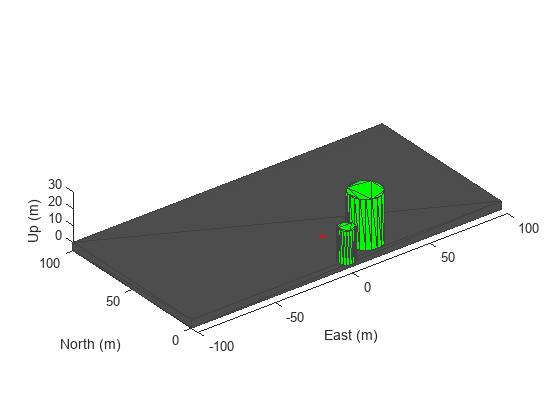show3D
Visualize UAV scenario in 3-D
Syntax
Description
[
visualizes latest states of the platforms and sensors in the UAV scenario
ax,plottedFrames] = show3D(scene)scene along with all static meshes. The function also returns the
axes on which the scene is plotted and the frames on which each object is plotted.
[
visualizes the UAV scenario at the specified ax,plottedFrames] = show3D(scene,time)time.
[
specifies additional options using Name-Value pairs. Enclose each ax,plottedFrames] = show3D(___,Name,Value)Name
in quotes.
Examples
Input Arguments
Name-Value Arguments
Output Arguments
Version History
Introduced in R2020b
